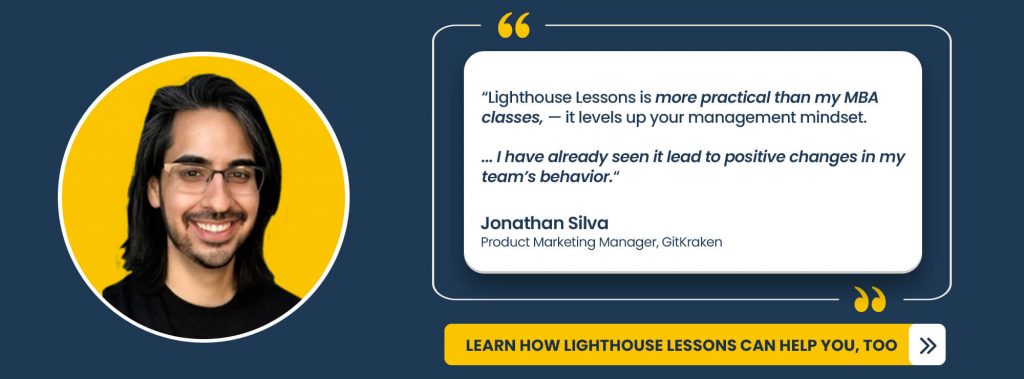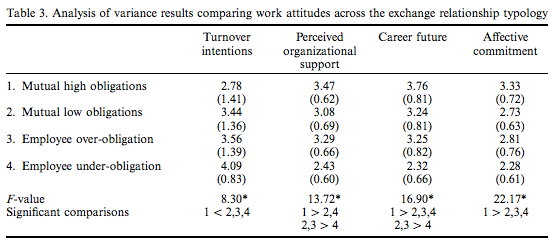As soon as you start growing your team, a key focus of any leader must be retention; replacing an employee is expensive both financially (as much as $65,000) as well as due to lost productivity for your team. With retention being such a crucial issue as the economy recovers and job hopping becomes easier, we wanted to be sure to cover this on the Lighthouse leadership blog.
Our friend, Eric Jorgenson, has made his latest edition of Evergreen all about the difficult challenge of retaining your team and I'm excited to share it today. (You can sign up to get all of Evergreen's in depth posts here.)
Evergreens are designed to feel like short books; let yourself meander and spend ~3 hours on this topic this week. Save some of these links for deep diving later and leave this week smarter than you started!
Employee Retention: The Keys to Long, Happy Working Relationships
Employee retention is on every leader's mind. Building or managing a successful company means crafting and keeping a great team. After doing the hard work to recruit and hire the best employees, it's important to make sure they stick around to do great work with you for a long time; replacing employees gets expensive fast!
Over time, employees tend to get better at their jobs, and grow with the company; their value grows the longer they're with you. They also save you money on costs of hiring and new staff training, and your company and culture become more stable with less turnover.
One fundamental thing to realize about employee retention is that the effort starts on day 1. Recruiting, Hiring, and Onboarding all factor into Employee Retention efforts. As we'll see in this deep dive on the subject — being proactive is far more effective than being reactive when it comes to employees wanting to quit.
Stop Saying ‘Employee Retention'
During exploring this topic, it became clear how poorly-chosen this phrase is. What's the definition of retention?
Noun. "The continued possession, use, or control of something."
Companies have no such relationship with their employees, nor should they aspire to it. Working for a company is a mutual agreement that benefits both sides.
Let's think about this problem in terms of ‘Employee Engagement'— it's not perfect but it's better than ‘retention'.
Semantics here are important, and they will define the mindset and the way challenges are approached. Retaining someone implies that they want to leave, and intervention will stop them, or keep them despite their wishes to leave. This is clearly not an effective way to tackle this problem.
Let's look at this challenge in a more fundamental way, and see if we can think about this more clearly. What we'll cover today:
- The true goals of Employee Engagement.
- How to think about these challenges in progressive and productive ways.
- Methods of management that engage employees and have them eager to stay with your company.
Note: Addressing Employee Engagement rather than Retention opens up the chance of conflating this topic with other more general management practices, so I'll do by best to keep this in the spirit of ‘how long employees stick around'.
The Goals of Employee Engagement
Implied in any effort of ‘Employee Retention' is the aim to reduce turnover. However, at some point, everyone who works at a company will leave. The goal cannot be to keep everyone forever.
One goal can be to lengthen the tenure of your very best people. Those that are the best performers contribute more and more value the longer they are working there, so extending that duration can produce more, and delay the inevitable costs of turnover.
Another can be to avoid early turnover. If we accept that there is a natural cadence to employees leaving and turnover is expected, then the goal becomes to avoid people leaving before the expected point in their employment life cycle. This will help reduce your costs associated with turnover, and the disruptions to your team's productivity.
While there are a lot of contributors to unwanted turnover (like Hiring and Onboarding) in the employment process, good employee engagement will keep individuals interested and involved in the organization throughout their employment.
Engaging the right people
Turnover is not always a bad thing — everyone will leave at some point. The goal is to have the best people stick around, and under-performers move on. Unfortunately, the natural pattern in most companies is the opposite of this, as Bruce Webster wrote in The Dead Sea Effect:
There is an anti-pattern that I've seen in large organizations which I have come to call "the Dead Sea effect”. The Dead Sea, of course, is a large body of water between Israel and Jordan, located well below sea level. The Jordan River empties into it; water leaves only by evaporation, which means that over the eons, the Dead Sea has become very salty (e.g., 8x saltier than the ocean). As such, it is generally unable to support life, except when spring floods temporarily lower the salinity.
Many large corporate/government IT shops — and not a few small ones — work like the Dead Sea. New hires are brought in as management deems it necessary. Their qualifications will tend to vary quite a bit, depending upon current needs, employee departure, the personnel budget, and the general hiring ability of those doing the hiring. All things being equal, the general competency of the IT department should have roughly the same distribution as the incoming hires.
But in my experience, that's not what happens. Instead, what happens is that the more talented and effective IT engineers are the ones most likely to leave — to evaporate, if you will. They are the ones least likely to put up with the frequent stupidities and workplace problems that plague large organizations; they are also the ones most likely to have other opportunities that they can readily move to.
What tends to remain behind is the ‘residue' — the least talented and effective IT engineers. They tend to be grateful they have a job and make fewer demands on management; even if they find the workplace unpleasant, they are the least likely to be able to find a job elsewhere. They tend to entrench themselves, becoming maintenance experts on critical systems, assuming responsibilities that no one else wants so that the organization can't afford to let them go.
The Dead Sea Effect can be pernicious — it means that over time, talent reverts to a B-level. Which, as Mort Mandel describes in It's All About Who, will mean a very different result for your company:
"What I have discovered is that B's can prevent an organization from achieving much greater accomplishments. The C players get fired or quit because they can't meet the standards, but the B players hang on. […] They cheat you from achieving all you could. Even worse, you probably won't know what you've failed to achieve — all because you had a B player with whom you were comfortable, in a job where you could have had an A."
All that to say:
Not all turnover is created equal
As an example: part of being a great employee is dedication, so Zappos (and now Amazon) are testing this by offering a ‘quitting bonus' — $5,000 to quit. If you're willing to take it, you shouldn't be there. That's ‘good' turnover.
B or C players who are leaving your company don't make for tragic news, and the impact will largely depend on the timing involved. If they've worked with you for <1 year, then it may be costly, but affords you the opportunity to hire a better replacement. If you don't feel the need to replace them, then it's pure cost savings.
If the B or C player who is leaving has been with you for years, your attitude should be ‘better late than never' — it's a part of the natural cycle, to be expected, and gives you a chance to restaff with an improvement.
For A players who are leaving in the natural course of things, that should be expected and accepted. The best you could hope for may be to find a new role that excites them within the company. If not, add them to your Alumni network happily and look forward to seeing them grow.
A players who leave a company before they've completed the natural cycle of employment (usually 2–4 years) are where the real losses come from.
An alternate view of Employee Turnover
The common feeling is that quitting a job is a negative thing — it has a way of making everyone feel worse. Employees feel like they're giving up on a company or disparaging it, and employers often reinforce that feeling. Quitting a job is a natural part of employment— let's feel better about it!
Create Alumni, Not Ex-Employees
If employees are seen as Alumni, it's a mutually supportive arrangement that benefits everyone. Alex Papadimoulis talks about this in Up or Out:
"An alumni relationship is positive; something that people can take pride in; and one that keeps the door open for further opportunities on both ends. Let's face it; we're already curious about our former workplaces and try to keep up through former coworkers. It'd be that much easier if the company facilitated this in some manner.
The alumni relationship also helps with the flow of new personnel. While ex-employees are hesitant to recommend the company they "broke up” with, alumni will champion it to colleagues in need of similar experience. Furthermore, there's no sense of defeat when an alumni returns — armed with experiences from other organizations — for another tenure.
For consulting companies or services firms, maintaining a solid relationship with alumni is an excellent avenue to find new business. Who better to recommend as a vendor than a company that one had first-hand experience working at?"
Doesn't that sound better than an employee's departure marking the last time you hear from or speak to them?
Mutual Obligations through Psychological Contracts
A paper from the Journal of Organizational Behavior studied the range of implied social contracts that various employers had with their employees, and what the implications were for turnover. Here are the results:
It's a little thick on the details of the execution of the experiment, but it supports the basic hypothesis that the happiest and most committed employees are those who feel there is a strong mutual obligation between them and their employers.
Finding ways to create and nurture this mutual sense of commitment (and keep it in balance) is proven to extend working relationships.
Why Good Employees Leave, and How to Avoid it happening Prematurely
Anyone who leaves a job makes the decision based on a combination of variables, and a balance of pros and cons. With multiple factors contributing to these decisions, we should take a broad perspective on what could cause people to want to quit and learn to address each of them in turn.
Self-Actualization or Non-Boredom
The first idea was nailed in another excerpt from Up or Out:
"Employees — especially the most talented ones — are not "dating around” and moving from place to place in search of the Perfect Company at which they can grow old and retire at. They've already aced the first four rungs of Maslow's hierarchy and are in search of self-actualization: the instinctual need of humans to make the most of their abilities and to strive to be the best they can."
The more basic way to explain self-actualization is: Never let them get bored. As Michael Lopp (under Pen name Rands) writes in Bored People Quit:
"As I've reflected on the regrettable departures of folks I've managed, hindsight allows me to point to the moment the person changed. Whether it was a detected subtle change or an outright declaration of their boredom, there was a clear sign that the work sitting in front of them was no longer interesting. And I ignored my observation. I assumed it was insignificant. He's having a bad day. I assumed things would just get better. In reality, the boredom was a seed. What was "I'm bored” grew roots and became "I'm bored and why isn't anyone doing anything about it?” and sprouted "I'm bored, I told my boss, and he… did nothing,” and finally bloomed into "I don't want to work at a place where they don't care if I'm bored.”
I think of boredom as a clock. Every second that someone on my team is bored, a second passes on this clock. After some aggregated amount of seconds that varies for every person, they look at the time, throw up their arms, and quit."
The post from Rands, who has managed engineers at Apple, Palantir, and Pinterest, goes into fascinating detail on how to handle this challenge, with both preventative and intervention strategies. A great read for any manager.
Be a Part of something Bigger
The feeling of working alongside a strong team toward a worthy goal is powerful and intoxicating. Humans are wired for teamwork, and the possibility of contributing to the creation of something larger in cooperation with others can, in itself, create an engaging workplace.
There are studies that suggest that people work harder and longer with even the mere mention of the word ‘together', with no other changes to the task:
In Carr and Walton's studies, participants first met in small groups, and then separated to work on difficult puzzles on their own. People in the psychologically together category were told that they would be working on their task "together” even though they would be in separate rooms, and would either write or receive a tip from a team member to help them solve the puzzle later on. In the psychologically alone category, there was no mention of being "together,” and the tip they would write or receive would come from the researchers. All the participants were in fact working alone on the puzzles. The only real difference was the feeling that being told they were working "together” might create.
The effects of this small manipulation were profound: participants in the psychologically together category worked 48% longer, solved more problems correctly, and had better recall for what they had seen. They also said that they felt less tired and depleted by the task. They also reported finding the puzzle more interesting when working together, and persisted longer because of this intrinsic motivation (rather than out of a sense of obligation to the team, which would be an extrinsic motivation)."
So work to create the feeling of teamwork, in such a way that everyone feels they're working together and contributing to the whole. This will increase the attachment that your team feels to their work, and their working environment.
Treat Employees as Customers of Management
Customers have choices, and their willingness to choose your business will determine it's success, so you do everything possible to make that an easy choice. The same force is at work with your employees.
If the ethos of customer care has been properly instilled in a team of managers, they should be able to apply the same principles to their employees as they do to their customers. This post does a fantastic job outlining these ideas:
"Like all customer relationships, the one you have with your employees is a trade. […]
The best companies in the world are known for caring so much about their customers they do everything they can to help meet their needs. And that's exactly what the best leaders do, too. The leaders who provide amazing service to their employees create a culture where those employees can provide amazing service to their customers."
This comes from the concept of Servant Leadership — which, if you're not familiar, would be a great thing to catch up on. This post is a good place to start if you want to learn more about what is servant leadership.
"The basic belief of Servant Leadership is that, we, as leaders, are here — first and foremost — to serve our organizations. This may sound obvious, or even inevitable, but in our experience, it's neither. In more traditional organizations, the service ethic flows in the opposite direction; that is, the organization is set up to serve its leaders, not the other way around.
To live Servant Leadership effectively; we start with the view that we are going to treat our staff as our "customers.”
Take good care of your Staff, and they'll stick around to take great care of your customers. You care for your customers by caring for your staff.
Linkedin's CEO on 3 Ways to Appreciate Employees
This short read from Jeff Weiner covers the basic musts of keeping employees engaged: Mentorship, Career Path, and Recognition.
Also, he makes some fantastic points about how once people have decided to leave — it's incredibly hard to get them to stay.
"Don't make the mistake of taking your most talented people for granted and assuming they know how you feel. If that's the case, more often than not you'll end up telling them, but only after it's too late. Recognize a job well done consistently and you'll not only be more likely to retain your most valuable people, you'll motivate them to do their best work along the way."
"Invert, Always Invert” — Jacobi
Rather than just look at how to engage employees, it's also helpful to look at how to lose them, and do the opposite. This trick of Inversion is often helpful in solving problems — look at them backwards! See what NOT to do, in addition to what TO do.
Jason Evanish does a great job of showing common ways to lose employees, and how to avoid those losses in this post also here on the Lighthouse blog. This is a great place to start as a baseline. If you're making these mistakes, anything else you do is unlikely to save you. Get the basics right!
Create the Narrative
Erik Dietrich wrote a fantastic post full of thoughts on how to keep the best programmers around. Most of his advice is applicable to other roles as well. Dietrich addresses a few of the things we've already mentioned, and wraps them up with a fantastic closing section about "Creating the Narrative."
Given our human proclivity toward stories, our need to be able to place ourselves in time, and have some idea of how the future will go, this seems like a very powerful idea in the context of the employee relationship.
You need to offer your talented developers a more appealing narrative if you want them to stay. Make sure that you take them aside and reaffirm that narrative to them frequently. And make sure the narrative is deterministic in that their own actions allow them to move toward one of the goals. Here are some narratives that might keep developers around:
"If you implement feature X on or ahead of schedule, we will promote you.”
"With the work that we're giving you over the next few months, you're going to become the foremost NoSQL expert in our organization.”
"We recognize that you have a lot of respect for Bob's Ruby work, so we're putting you on a project with him to serve as your mentor so that you can learn from him and get to his level.”
"We're building an accounting package that's critical to our business, and you are going to be solely responsible for the security and logging portions of it.”
"If your work on project Y keeps going well, we're going to allow you to choose your next assignment based on which language you're most interested in using/learning.”
Notice that these narratives all appeal to autonomy/mastery/purpose in various ways. Rather than dangling financial or power incentives in front of the developers, the incentives are all things like career advancement/recognition, increased autonomy, opportunities to learn and practice new things, the feeling of satisfaction you get from knowing that your work matters, etc.
And once you've given them some narratives, ask them what they want their own to be. In other words, "we'll give you more responsibility for doing a good job” is a good narrative, but it may not be the one that the developer in question envisions. It may not always be possible to give the person exactly what he or she wants, but at least knowing what it is may lead to attractive compromises or alternate ideas. A new team member who says, "I want to be the department's principal architect” may have his head in the clouds a bit, but you might be able to find a small, one-man project and say, "start by architecting this and we'll take it from there.”
At any point, both you and the members of your team should know their narratives.
Creating narratives for your employees, and having an open dialogue with them about what they can expect in the future is fast and cheap, even when it may not be easy. Make these promises and deliver on them. You'll be helping your team develop and grow, and provide increasing mutual benefits between the company and the employee.
Books and Talks to Go Deeper
Dan Pink's TED Talk on The Puzzle of Motivation is a classic in workplace motivation. He shows that what people crave is Mastery, Autonomy, and Purpose, which ties in well to our ideas above (like creating a narrative and avoiding boredom). He also shows that money is not the best motivator in work requiring creativity.
It's All About Who by Mort Mandel is a book about his lifetime of experience building a Billion-dollar business with some of the longest employee relationships I've ever heard of. Great story full of practical advice.
The Alliance by Reid Hoffman, founder of Linkedin. One idea from the book is a new paradigm for the employee-employer relationship: Tours of Duty, where projects are set for a time frame (usually 2-5 years) that is understood by both parties and renegotiated after that time is up. It also teaches you how to start an employee alumni program.
Thank you
Massive appreciation for all contributors to this Edition of Evergreen: Aaron Wolfson, Regan Bozman, Nik Spirin, Ninan Thampy, Bruno Raymond, Jason Evanish, and Itamar Goldminz.
Many thanks for being a part of this project! Not every suggestion is able to make it to the final edit, but every single suggestion is read and appreciated.
Never Enough
As my Father always says: "There's always room for the best.” There's always a better resource out there. These collections can always get better, and I hope that they do. If you can think of anything that was missed, I welcome you to share it in the comments below.

Eric Jorgenson is building a better Home Service experience with the team at Zaarly, and spends the weekends learning more by creating Evergreen.
Want to build up your management skills? Lighthouse Lessons can help you.
Our bite size, highly actionable programs are perfect for even the busiest of managers. Become a better leader like Jonathan Silva did by learning more and signing up here.









